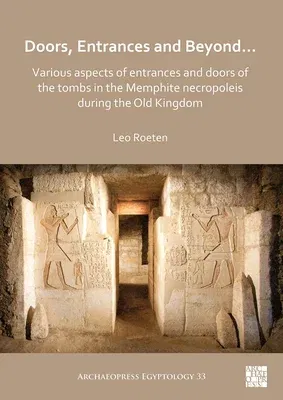Doors are more than a physical means to close off an entrance or an
exit; doors can also indicate that a boundary between two worlds has
been crossed. This is above all the case for the door into the chapel.
Such a door constitutes a barrier between the world of the living and
the world where the living and the dead can coexist, while, inside the
chapel, the false door acts as a barrier between the world of the living
and that of the dead. Taking into account both physical and non-physical
aspects of the door, Doors, Entrances and Beyond... proposes that
porticos, false doors, niches and mastaba chapel entrances are
interconnected in their function as a barrier between two worlds, of
which the entrance into the chapel is the most important. The different
elements of the entrance have a signalling, identifying, inviting and in
some cases a warning function, but once inside the entrance itself, the
decoration of its corridor walls adds a guiding and an explanatory
function to it. The main themes there are the tomb owner standing or
seated with or without members of the family, and subsidiary figures.
Over the course of time, decreasing tomb dimensions correlate with the
decreasing size of the chosen decoration themes. At the same time, both
on the walls of the corridor and the false door, a change of decoration
themes took place which can be explained through the changing mode of
supply of the k3 of the deceased.

